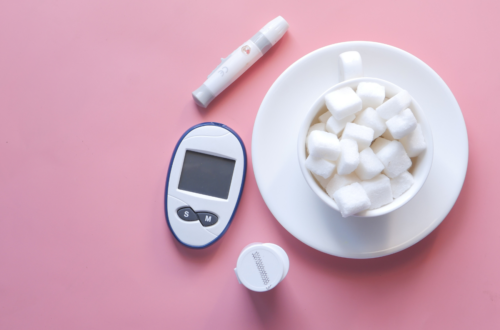
Are “Forever Chemicals” Really Forever?
I’d be lying if I said I thought much about the chemicals in my food or cookware. If they’re on the market in the U.S., they must be safe, right? But now, with a toddler at home, I feel a strong obligation to consider these health concerns—especially regarding PFAS, or per- and polyfluoroalkyl substances. What are these “forever chemicals”? How do they end up in my food? Should I be worried, and what can I realistically do?
If you’ve had similar questions, let’s take a closer look at some of these recent health claims and explore practical strategies to reduce our exposure.
What are PFAS?
Developed in the 1940s, PFAS or per- and polyfluoroalkyl substances, were created to produce materials with unique resistance to heat, water, stains, and grease. They are commonly found in non-stick cookware, cleaning products, and disposable packaging.
PFAS have recently been linked to serious health concerns, including cancer, immune dysfunction, birth defects, endocrine disruption, and liver disease. Known as “forever chemicals,” PFAS persist indefinitely in the environment without fully breaking down.
Where Do PFAS Originate?
PFAS primarily originate in the industrial and manufacturing process, but they quickly make their way into communities and consumer products.
- Industrial Manufacturing—PFAS are used to make non-stick cookware, waterproof clothing, stain-resistant fabrics, and firefighting foams. Factories that produce or use PFAS often release these chemicals into the air, water, and soil.
- Consumer Products—PFAS are commonly found in items like non-stick cookware (like Teflon), cleaning product, cosmetics, and food packaging materials (like grease-resistant wrappers and containers).
- Contaminated Environment—PFAS have been detected in air, water, soil, wildlife, and even human blood, likely originating from manufacturing facilities, community wastewater, and landfills.
What Are the Health Effects of PFAS?
The allegations against PFAS are quickly growing. While the list of concerns is ever-expanding, there is strong evidence supporting the association between PFAS exposure and a range of health effects.
Cancer
A 2021 study published in the Journal of the National Cancer Institute showed a significant association between higher PFAS levels and increased incidence of renal cell carcinoma, with more than double the risk among those in the highest exposure quartile. This association persisted even after adjusting for kidney function, supporting the likelihood that PFAS are renal carcinogens with significant public health implications.
A 2023 study published in Environmental Health Perspectives examined the relationship between PFAS exposure and testicular germ cell tumors among U.S. Air Force servicemen. Those involved in firefighting and those stationed at bases with PFAS-contaminated drinking water had the highest blood concentrations of PFAS, along with a significantly increased risk of testicular cancer.
The National Cancer Institute provides a comprehensive list of evidence supporting the link between PFAS exposure and cancers such as lung, prostate, breast, and colorectal cancer.
Immune System Dysfunction
A comprehensive analysis of PFAS exposure and immune function shows that PFAS compounds can suppress the immune system, weakening the body’s response to diseases and vaccines. High PFAS levels have been correlated with reduced antibody concentrations against diseases such as tetanus and diphtheria, and there is evidence suggesting that PFAS may also increase the risk of severe COVID-19 complications.
Endocrine Dysfunction
PFAS have been shown to interfere with hormone production, regulation, and signaling. These chemicals can disrupt thyroid function, impacting metabolism and development, and have been linked to reproductive health issues, including altered menstrual cycles, reduced fertility, and lower testosterone levels.
Birth Defects and Developmental Delay
PFAS exposure has been linked to an increased risk of birth defects and developmental delays. PFAS can cross the placenta, exposing the developing fetus to these chemicals. Prenatal exposure has been associated with low birth weight, a factor linked to various developmental challenges. Studies also suggest a correlation between PFAS exposure and delayed cognitive development and behavioral issues in children.
Why Are PFAS Still in Use?
In short, PFAS are highly effective, and we haven’t yet found an ideal replacement—much like the situation with plastics. PFAS excel at making products more durable, as well as water-, stain-, and heat-resistant. The United States Environmental Protection Agency largely leaves it up to individual states to enact regulations and restrictions on PFAS use.
Here in Colorado, House Bill 22-1345 took effect on January 1st, prohibiting the sale of most consumer products containing PFAS chemicals, such as carpets, rugs, fabric treatments, and oil and gas products. Some products containing PFAS can still be sold, provided they are clearly labeled as containing these chemicals.
How Can I Reduce My PFAS Exposure?
Given the information above, reducing PFAS exposure might seem like a nearly impossible task, but there are small steps we can take to limit our personal exposure.
- Choose PFAS-Free Products: When possible, shop from companies that have pledged not to use PFAS in their products. With growing consumer demand, the list of PFAS-free options is expanding.
- Limit Use of Non-Stick Cookware: If you needed a sign to replace your old Teflon pans, this is it! Consider adding PFAS-free cookware to your holiday wishlist.
- Limit Packaged Food: Some fast-food wrappers, microwave popcorn bags, and other food packaging materials may contain PFAS. Cooking more at home and reducing processed and packaged food can help.
- Filter Your Drinking Water: While many new refrigerators come with built-in water filters, it’s easy to forget and still fill the kettle straight from the tap. Be sure to use a water filter certified to remove PFAS for all drinking water.
Key Takeaways
So, yes, “forever chemicals” really are forever—but they don’t have to be if we start phasing them out of our homes and, hopefully, the manufacturing industry through regulations, consumer demand, and incentives.
In the meantime, consider choosing PFAS-free products, filtering your drinking water, avoiding non-stick cookware, and limiting packaged foods. Despite the challenges, small steps can help reduce personal exposure to these pervasive chemicals.
- US EPA O. Pfas explained. March 30, 2016. Accessed November 10, 2024. https://www.epa.gov/pfas/pfas-explained
- Hampson HE, Li S, Walker DI, et al. The potential mediating role of the gut microbiome and metabolites in the association between PFAS and kidney function in young adults: A proof-of-concept study. Science of The Total Environment. Published online October 2024:176519. doi:10.1016/j.scitotenv.2024.176519
- Shearer JJ, Callahan CL, Calafat AM, Huang WY, Jones RR, Sabbisetti VS, Freedman ND, Sampson JN, Silverman DT, Purdue MP, Hofmann JN. Serum Concentrations of Per- and Polyfluoroalkyl Substances and Risk of Renal Cell Carcinoma. J Natl Cancer Inst. 2021 May 4;113(5):580-587. doi: 10.1093/jnci/djaa143. PMID: 32944748; PMCID: PMC8096365.
- Purdue MP, Rhee J, Denic-Roberts H, McGlynn KA, Byrne C, Sampson J, Botelho JC, Calafat AM, Rusiecki J. A Nested Case-Control Study of Serum Per- and Polyfluoroalkyl Substances and Testicular Germ Cell Tumors among U.S. Air Force Servicemen. Environ Health Perspect. 2023 Jul;131(7):77007. doi: 10.1289/EHP12603. Epub 2023 Jul 17. PMID: 37458713; PMCID: PMC10351502.
- Beans C. How “forever chemicals” might impair the immune system. Proc Natl Acad Sci USA. 2021;118(15):e2105018118. doi:10.1073/pnas.2105018118
- Li L, Guo Y, Ma S, Wen H, Li Y, Qiao J. Association between exposure to per- and perfluoroalkyl substances (Pfas) and reproductive hormones in human: A systematic review and meta-analysis. Environmental Research. 2024;241:117553. doi:10.1016/j.envres.2023.117553
- Zhang Y, Mustieles V, Sun Q, et al. Association of early pregnancy perfluoroalkyl and polyfluoroalkyl substance exposure with birth outcomes. JAMA Network Open. 2023;6(5):e2314934. doi:10.1001/jamanetworkopen.2023.14934


You May Also Like

3 Key Insights from the Nutrition Entrepreneur Summit
March 11, 2025
Is Glucose the New Gluten?
May 17, 2024
